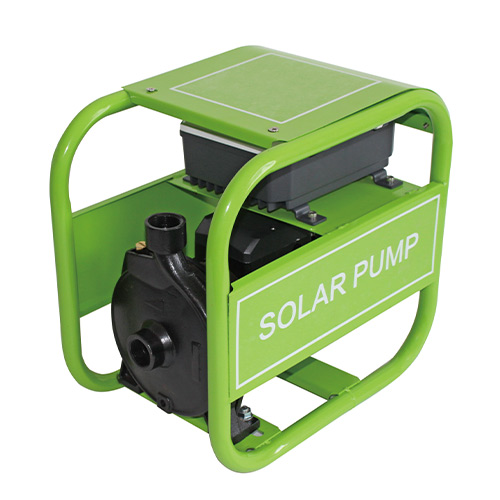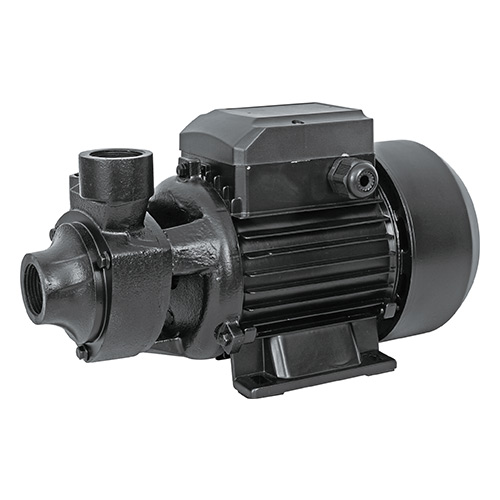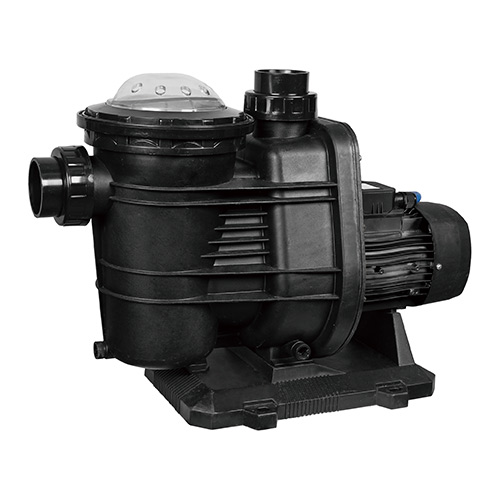NEWS
Welcome to My Blog!
Before we dive into the content, I’d love for you to join me on my social media platforms where I share more insights, engage with the community, and post updates. Here’s how you can connect with me:
Facebook:https://www.facebook.com/profile.php?id=61576738655239
Now, let’s get started on our journey together. I hope you find the content here insightful, engaging, and valuable.
Table of Contents
Introduction

As homeowners increasingly seek sustainable and cost-effective solutions for their water needs, solar water pumps have emerged as an eco-friendly alternative to traditional electric or gas-powered systems. These devices harness the sun’s energy to move water for various applications, such as garden irrigation, pond circulation, or household water supply. The best solar water pump options combine efficiency, durability, and ease of use, making them ideal for both urban and rural homes. This blog explores the top considerations, features, and benefits of adopting solar water pumps, offering homeowners a comprehensive guide to choosing the right system for their needs.
Solar water pumps operate without reliance on grid electricity, reducing energy costs and environmental impact. They are particularly valuable for off-grid locations or areas with inconsistent power supply, providing a reliable water source for gardening, livestock, or decorative water features. With advancements in solar technology, these pumps have become more efficient and affordable, making them accessible to a wide range of homeowners. This article will dive into the key aspects of selecting the best solar water pump, including types, features, installation tips, and more, to help you make an informed decision.
Why Choose a Solar Water Pump for Your Home?
The appeal of the best solar water pump lies in its sustainability and long-term cost savings. By utilizing renewable solar energy, these pumps eliminate the need for fossil fuels or grid electricity, significantly reducing operational costs. Homeowners can save on utility bills while contributing to a greener planet. Additionally, solar water pumps are low-maintenance, with fewer moving parts compared to traditional pumps, which translates to reduced wear and tear over time.
Another advantage is their versatility. Whether you need to irrigate a small backyard garden, maintain a pond, or supply water to a remote cabin, there’s a solar water pump designed to meet your specific requirements. Their ease of installation—often requiring no complex wiring—makes them a practical choice for DIY enthusiasts. For homeowners in sunny regions, these pumps offer consistent performance, especially when paired with battery backups for cloudy days or nighttime operation.
Types of Solar Water Pumps for Homeowners

Submersible Solar Water Pumps
Submersible solar water pumps are designed to operate underwater, making them ideal for deep wells or ponds. These pumps are highly efficient for applications requiring water to be lifted from significant depths, such as boreholes or underground reservoirs. The best solar water pump in this category often features a brushless DC motor for quiet operation and longevity, with some models capable of pumping water from depths of up to 100 meters.
Surface Solar Water Pumps
Surface solar water pumps are placed above ground near the water source, drawing water through suction. They are best suited for shallow water sources, such as streams, ponds, or tanks, with a maximum suction lift of about 7-8 meters. These pumps are easier to access for maintenance and are often used for garden fountains or small-scale irrigation systems. Homeowners looking for a straightforward, budget-friendly option may find surface pumps to be the best solar water pump for their needs.
Floating Solar Water Pumps
Floating solar water pumps are perfect for decorative applications, such as birdbaths or small pond fountains. These pumps float on the water’s surface, with an integrated or detachable solar panel that powers the pump directly. Their compact design and ease of installation make them a popular choice for homeowners seeking to enhance their garden aesthetics without complex setups.
Key Features to Look for in the Best Solar Water Pump
When selecting the best solar water pump, several features can make a significant difference in performance and user satisfaction. First, consider the pump’s flow rate, measured in gallons per hour (GPH) or liters per hour (LPH), which determines how much water it can move. For example, a small garden fountain may require a flow rate of 100-200 GPH, while irrigation for a large lawn may need 1000 GPH or more.
Another critical feature is the solar panel’s wattage. Higher-wattage panels ensure consistent performance, even on partially cloudy days. Look for pumps with adjustable flow settings or multiple nozzle heads, which allow customization of water patterns for decorative features. Battery backup options are also valuable, enabling operation during low sunlight conditions. Durability is essential, so prioritize pumps made from corrosion-resistant materials like stainless steel or high-grade plastic to withstand constant water exposure.
Solar Water Pump Applications for Homeowners
The versatility of the best solar water pump makes it suitable for a variety of home applications. For gardeners, these pumps can power drip irrigation systems, ensuring plants receive a steady water supply without manual effort. In rural settings, solar pumps can draw water from wells for household use, such as drinking, cooking, or bathing. They are also ideal for maintaining pond ecosystems, circulating water to prevent algae buildup and support aquatic life.
Decorative applications, such as fountains or waterfalls, add aesthetic value to outdoor spaces. A solar water pump can transform a simple birdbath into a dynamic water feature, attracting birds and enhancing your garden’s ambiance. For homeowners with livestock, these pumps can provide a consistent water supply for animals, reducing reliance on grid-powered systems.
Comparing Solar Water Pump Specifications
To help homeowners choose the best solar water pump, the following table outlines key specifications to consider when evaluating different models. This table focuses on general categories rather than specific brands to provide a clear framework for decision-making.
| Specification | Description | Considerations |
|---|---|---|
| Pump Type | Submersible, surface, or floating | Choose based on water source depth and application (e.g., well, pond, or fountain). |
| Flow Rate (GPH/LPH) | Amount of water pumped per hour | Match to your needs: 100-200 GPH for small fountains, 1000+ GPH for irrigation. |
| Max Head Height | Maximum vertical distance the pump can lift water | Ensure it meets the height from water source to delivery point. |
| Solar Panel Wattage | Power capacity of the solar panel | Higher wattage (e.g., 10-30W) for better performance in low sunlight. |
| Battery Backup | Optional feature for operation during low sunlight | Useful for consistent performance in cloudy regions or nighttime use. |
| Material Durability | Construction materials (e.g., stainless steel, plastic) | Opt for corrosion-resistant materials for longevity. |
| Nozzle Options | Number of spray patterns for decorative applications | More options allow customization for fountains or birdbaths. |
| Warranty Period | Duration of manufacturer’s warranty | Look for at least 1-2 years for reliability assurance. |
| Maintenance Needs | Frequency and complexity of upkeep | Low-maintenance pumps save time and effort. |
This table serves as a starting point for comparing solar water pumps, helping you align your choice with your specific needs and environmental conditions.
Installation Tips for Solar Water Pumps
Installing the best solar water pump is generally straightforward, but proper setup is crucial for optimal performance. Begin by selecting a sunny location for the solar panel, ideally facing south at a 30-45-degree angle to maximize sunlight exposure. If the pump includes a detachable panel, position it away from shade while keeping the pump near the water source. For submersible pumps, ensure the pump is fully submerged to prevent overheating, and secure any tubing to avoid leaks.
Surface pumps require stable, level ground to minimize vibration. Floating pumps are the easiest to install—simply place them in the water and ensure the panel receives direct sunlight. Regularly clean the solar panel to remove dust or debris, as this can reduce efficiency. If your pump includes a filter, check and clean it periodically to maintain water flow and prevent clogs.
Maintenance and Longevity of Solar Water Pumps
One of the advantages of the best solar water pump is its low maintenance requirements. Most models have fewer moving parts than traditional pumps, reducing the risk of mechanical failure. Regular maintenance includes cleaning the pump’s filter and impeller to prevent debris buildup, which can affect performance. For submersible pumps, inspect the seals and connections to ensure no water ingress damages the motor.
Solar panels typically last up to 25 years, while the pump itself can operate for 10-15 years with proper care. To extend lifespan, store the pump indoors during harsh winter months, especially in colder climates where freezing can damage components. If your pump has a battery backup, check the battery’s health annually and replace it as needed to maintain consistent operation.
Benefits of Solar Water Pumps for Eco-Conscious Homeowners

For environmentally conscious homeowners, the best solar water pump offers significant ecological benefits. By relying on renewable energy, these pumps reduce carbon emissions and dependence on fossil fuels. They also help conserve water by enabling precise irrigation systems, such as drip irrigation, which minimizes waste. In regions prone to power outages, solar pumps provide a reliable water supply, enhancing resilience for off-grid households.
Beyond environmental benefits, solar water pumps enhance property value by adding sustainable features that appeal to eco-minded buyers. The soothing sound of moving water from a solar-powered fountain or waterfall can also create a calming atmosphere, improving the quality of outdoor living spaces. These benefits make solar pumps a worthwhile investment for homeowners prioritizing both sustainability and aesthetics.
Conclusion
The best solar water pump offers homeowners a sustainable, cost-effective, and versatile solution for their water needs, whether for irrigation, pond circulation, or decorative fountains. By harnessing solar energy, these pumps reduce energy costs, minimize environmental impact, and provide reliable performance in various applications. With options like submersible, surface, and floating pumps, there’s a model to suit every homeowner’s needs, from small urban gardens to rural off-grid properties.
Ready to transform your home with an eco-friendly water solution? Contact us today to explore the best solar water pump options and start enjoying the benefits of sustainable water management.
FAQ
What is the best solar water pump for a small garden pond?
For small garden ponds, a floating or submersible solar water pump with a flow rate of 100-200 GPH and multiple nozzle options is ideal. Look for models with a 10-20W solar panel for reliable performance.
Can solar water pumps work on cloudy days?
Most solar water pumps rely on direct sunlight, so performance may decrease on cloudy days. Models with battery backups can maintain operation during low sunlight, making them suitable for less sunny regions.
How long do solar water pumps last?
With proper maintenance, solar water pumps can last 10-15 years, while their solar panels can function for up to 25 years. Regular cleaning and seasonal storage help extend lifespan.

